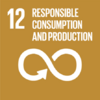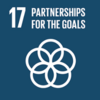LED2LEAP 2021 - Bologna Community Living Lab
The Bologna Living Lab
The course for students from University of Bologna is organized as a territorial laboratory in collaboration with the ETA BETA Social Cooperative, a non-profit organization founded in 1992 in the form of artists association engaged in research and experimentation, with particular attention to the social issues. Currently it collaborates with public and private authorities for projects aimed to promote adequate opportunities for socialization and social inclusion.
Particularly active in understanding the needs of people and public bodies, the cooperative has over the years explored alternative ways to identify socio-rehabilitation, training and job start-up paths, as well as placement within and outside the cooperative.
Alongside the art-craft workshops, a completely innovative vision of social entrepreneurship has been developed, where the individual is the bearer of cultural, emotional and economic values. Therefore, work is a central theme, as an essential tool for the dignity of the person. In the cooperative it can be divided in three main sectors: education, health and environmental sustainability.
To find out about our partners, follow the links to Etabeta Coop and Ex Villa Salus.
Who is Involved?
The project is aimed at students of the fifth year of Building Engineering and Architecture course, as future protagonists able to coordinate and direct activities with the community. During the Living Lab they will collaborate with the representatives of the ETA BETA association.
The project also aims to involve the inhabitants of the city of Bologna and in particular those of the Savena district (78,658 inhabitants); a useful tool in involving citizens could certainly be Iperbole, the civic network of the municipality of Bologna, but also the social media can be an important means of confronting and involving inhabitants, mainly through neighborhood groups.
Main Theme of the Living Lab
The course aims to train a professional figure to be able to work with urban communities in order to trace their needs and to develop techniques that allow the participation of all in the territorial choices of the neighborhood, whether it is planning or physical construction change of the landscape. The course starts from the assumption that common work on the territory increases territorial belonging, naturally becoming a school of democracy from below.
Methods
The Living Lab is conceived as a tool for social innovation, through a participatory planning process (co-design) and a strong generative and intercultural welfare imprint. The process is evaluated in progress and subjected to monitoring / evaluation activities shared with all the actors of the process, including citizens and is accompanied by a strong participatory communication campaign aimed at the city. The project intends to define an innovative model of reception and integration, which can be replicated in other European contexts. The Living Lab will be divided into 5 phases:
Which Community? Students will be put in contact with ETABETA representatives who can present the cooperative and the objectives of the project to be implemented. One of the meetings will probably be held “In situ”, to show students the spaces.
Participatory Analysis and Synthesis: The New Challenges of the Community The intersection between the activities that take place at ETA BETA and the interviews with the community should lead to highlighting points of development, areas of fragility, activities to be amplified and also new spaces to be shaped (Both through actions - temporary employment - and through architecture and landscape design). In this phase, the students, divided into groups according to their number, must identify the challenges on which they will particularly intend to focus in the next phase.
Collaborative Visioning The challenges identified in the second phase are examined according to the opinion of the cooperative, with which the students will discuss the emerged priorities, common and / or essential objectives instead of small groups and marginal individuals goals.
Co-design and transformation The students will try to implement a change or an idea in order to achieve one of the objectives that emerged in phase 2 according to the priority of actions developed in phase 3. In this phase they will participate in a community action, or draw up a project with the community, with respect to the proposed objectives.
Evaluation and Verification Together with the cooperative, students will evaluate their path, identifying the weaknesses and results achieved.
Project Location & Dissemination
Location of the Living Lab in Bologna is the Ex Villa Salus, SE of the city center.
The Living Lab will mainly focus on a building in the South-East suburbs of Bologna. Born as an eighteenth-century noble villa, it underwent various structural interventions in the 50s and 60s of the twentieth century: the construction of two side wings and the raising of three floors. It later became a private nursing home. After the bankruptcy it was acquired by the Municipality of Bologna in 2007.
Today the villa is closed and unusable and is in a state of total neglect. Through the project, the structure aims to become a place open to the territory and citizens. The general objective of the project is the inclusion in the local context of a center of hospitality, work and intercultural welfare. Another aspect of the Living Lab consists in thinking about connections with the headquarters of the ETA BETA Cooperative and with Bologna city center.






